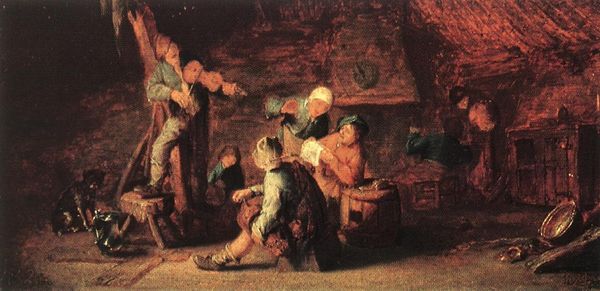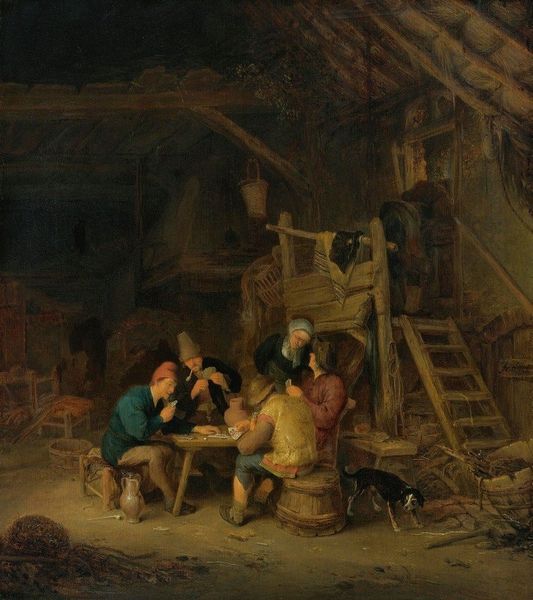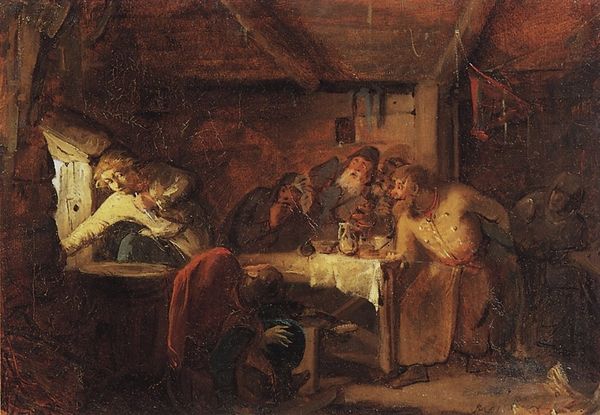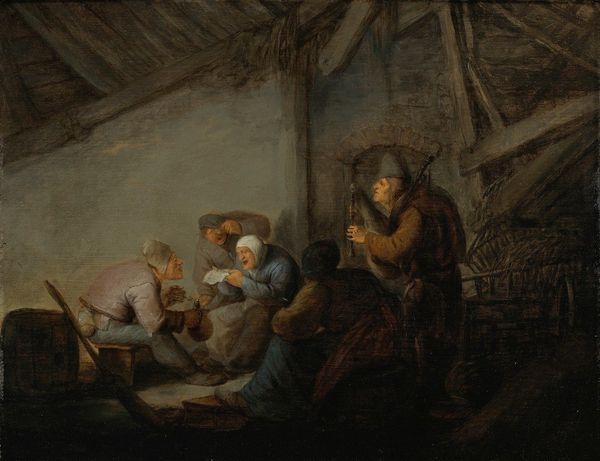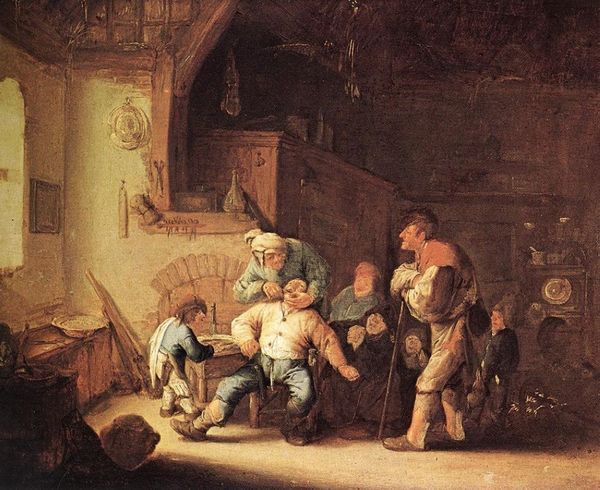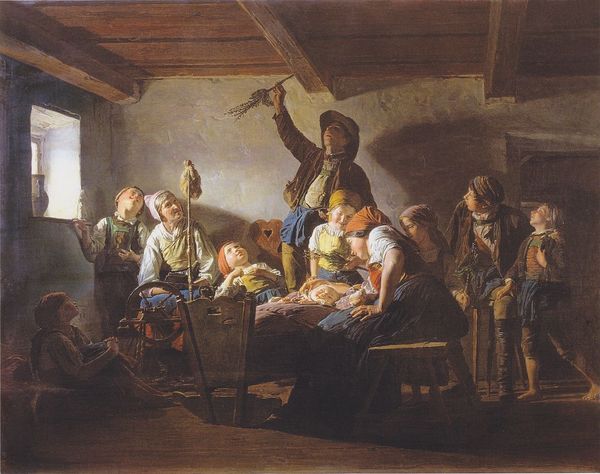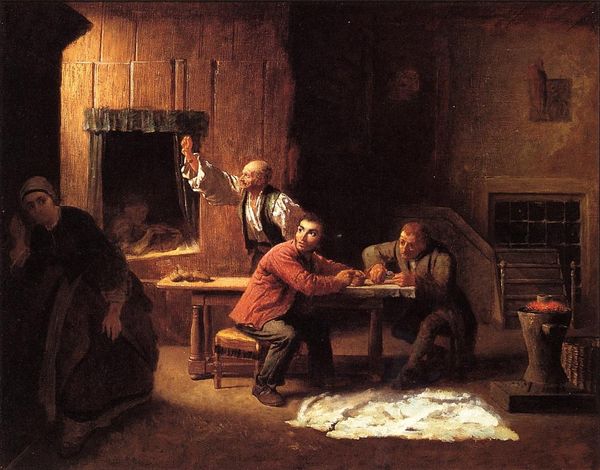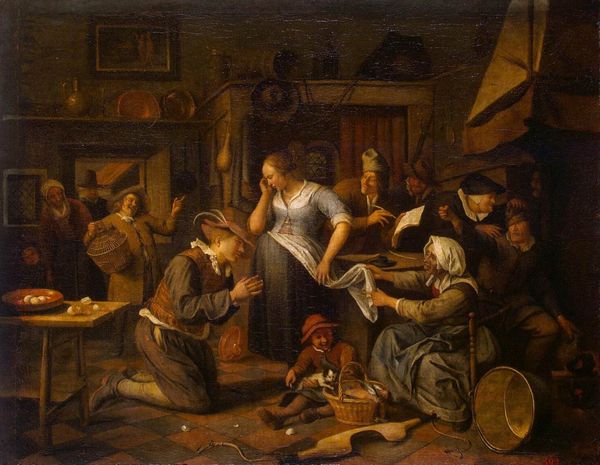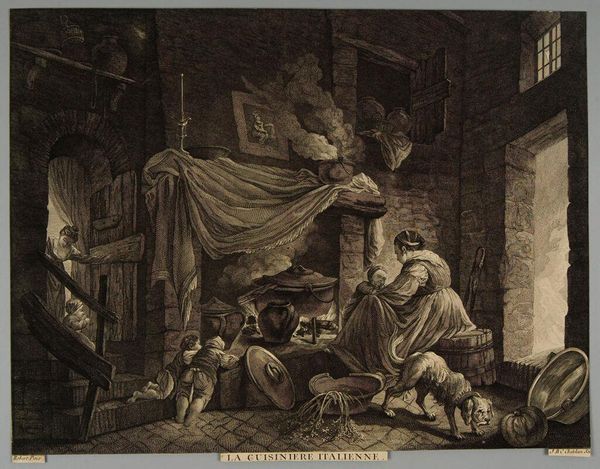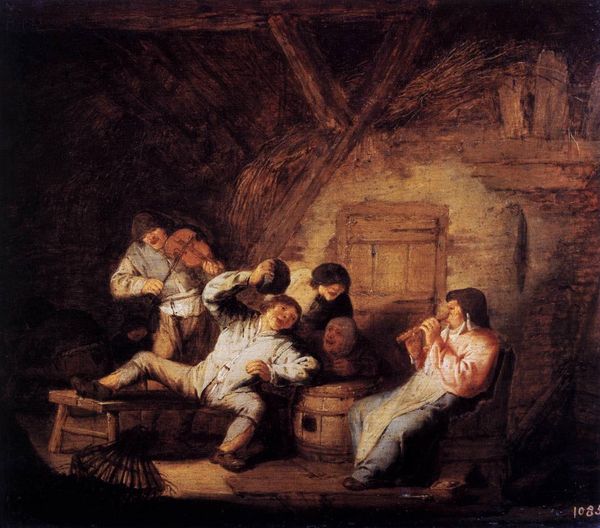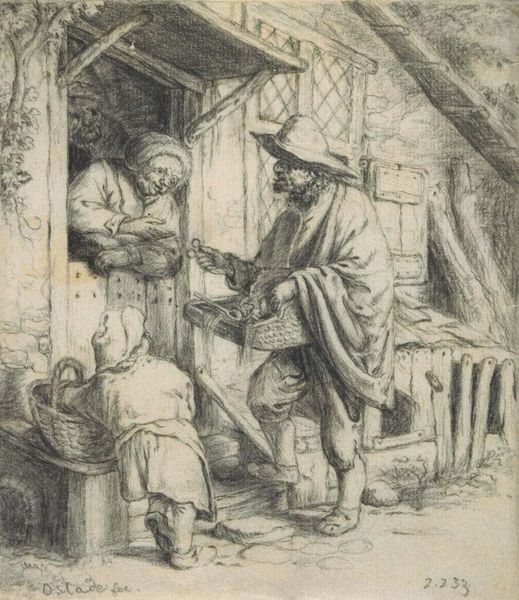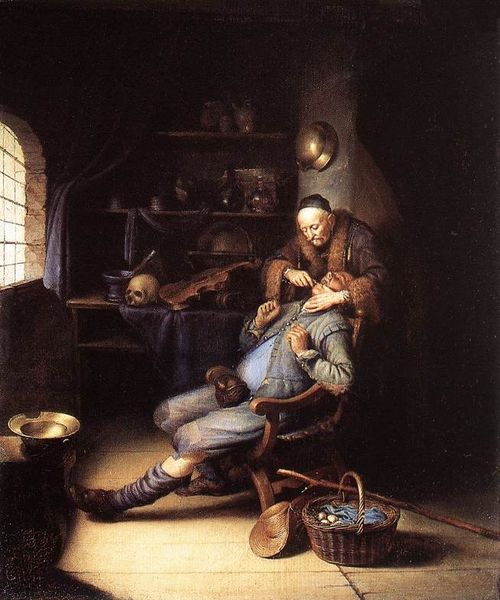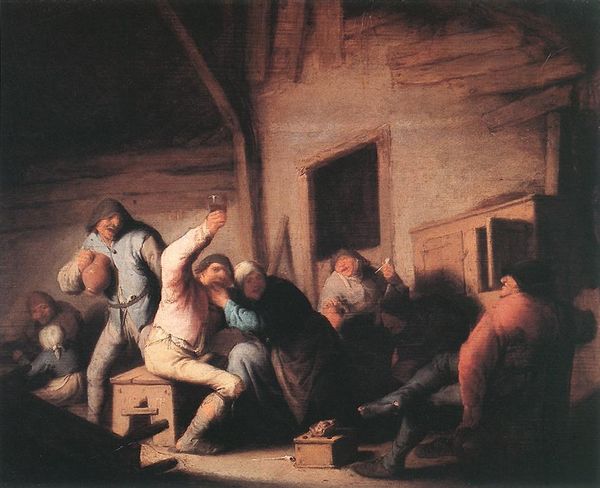
oil-paint
#
dutch-golden-age
#
oil-paint
#
figuration
#
oil painting
#
genre-painting
#
realism
Dimensions: 13 x 16.5 cm
Copyright: Public domain
Editor: Adriaen van Ostade's "Village Tavern with Four Figures," created in 1635 with oil paint, offers such a candid snapshot of 17th-century life. It’s quite dark, almost grimy, yet the details of the interior space feel very intentional. What stands out to you? Curator: The materiality interests me greatly. Ostade is rendering the everyday labor and social lives of common people, but he's doing so with oil paint, a medium associated with wealth and status. Notice how he builds up the layers of paint to mimic the rough textures of the tavern: the worn wood, the coarse clothing. This deliberate crafting underscores a shift in art production – moving away from solely depicting the aristocracy to embracing and scrutinizing all facets of society. Editor: So, the value isn't necessarily in *what* is painted, but in the act of choosing these subjects and using oil paints to represent them? Curator: Precisely! Consider the consumption aspect too. Who was buying these paintings? What does it mean for a wealthy merchant to own an image of peasant life? Ostade prompts us to reflect on the complexities of class, labor, and the evolving art market in the Dutch Golden Age. What kind of labor went into creating this image and what class is represented? How do these details impact our reading of the scene? Editor: That makes me think about how the ‘tavern scene’ became something to commodify and possess as an object... Curator: Absolutely. Ostade’s careful handling of materials and his attention to the ordinary exposes how the very act of painting became a form of social commentary. It elevates these figures, turning common spaces into important studies. Editor: It’s like, through this medium and the act of painting this subject, we’re also getting an analysis of societal norms, class structures, the work itself...That changes everything for me. Thank you. Curator: Indeed! Examining these elements gives us a richer understanding of the dynamic relationship between art, society, and the forces of production.
Comments
No comments
Be the first to comment and join the conversation on the ultimate creative platform.
